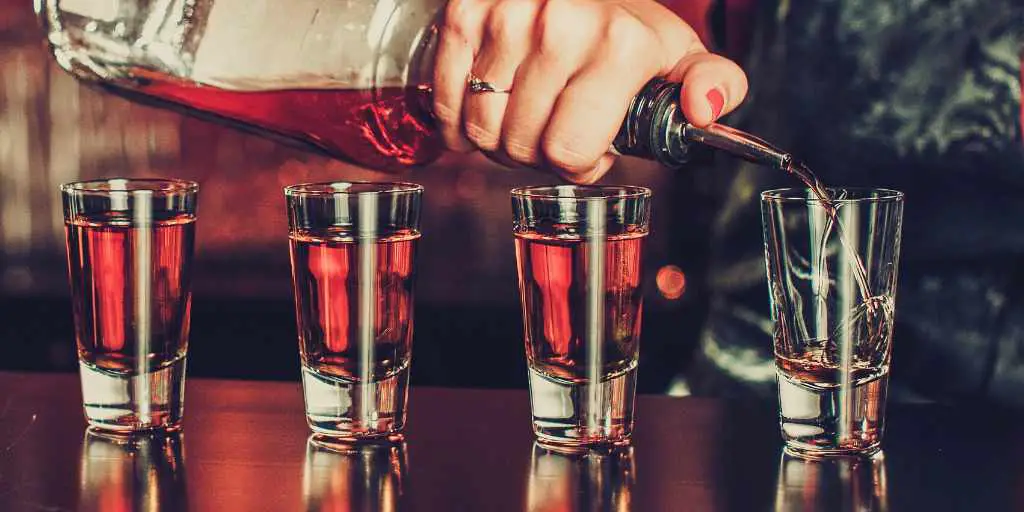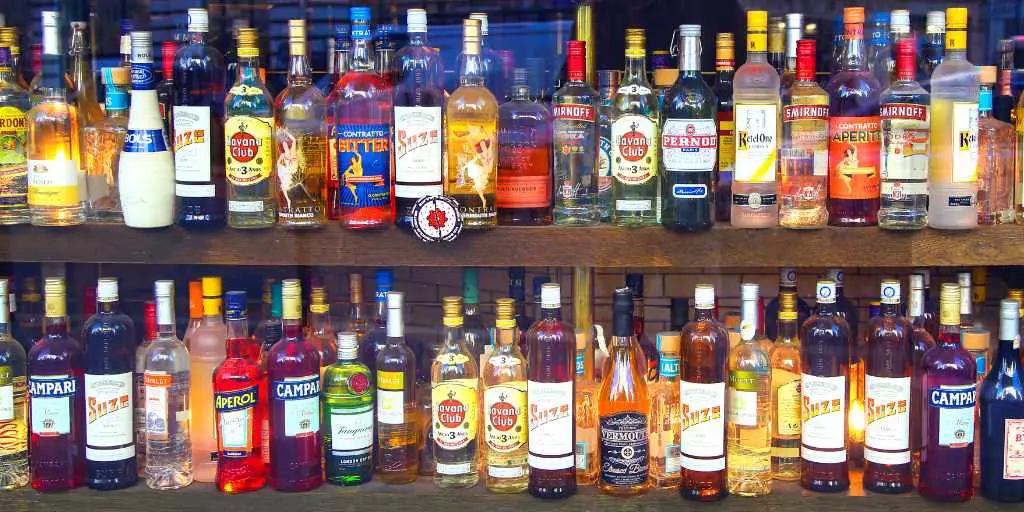Bartending requires precision and skill, particularly when it comes to measuring pours without the aid of tools like jiggers or measuring cups. Counting ounces while pouring, known as free pouring, is a fundamental skill for any bartender that allows for efficient and consistent drink-making. By mastering free pouring, bartenders can expedite service and maintain a rhythm during busy shifts while ensuring that each concoction has the correct amount of spirits.
Free pouring involves a rhythmic count that correlates to specific ounce measurements. This count system helps bartenders to gauge the amount of liquor they are pouring directly into the glass or shaker. The most common count is the “4 count,” where each count is equivalent to half an ounce, making a count to four equivalent to a two-ounce pour. The accuracy of this method hinges on the tempo at which the count is conducted, requiring practice and a steady hand.
Key Takeaways
- Counting ounces is an essential bartending skill that ensures consistent drink quality.
- The “4 count” method is a widely used technique for free pouring.
- Mastery of pouring counts requires practice to perfect the pour’s timing and flow.
Fundamentals of Pouring Technique
In bartending, mastering the pouring technique is crucial for both speed and accuracy. Whether employing free pouring or using measured pourers, a professional bartender’s skill in liquid measurement directly affects the quality of cocktails served.
Understanding Free Pouring
Free pouring is the method of pouring liquor directly from the bottle without using a measurement tool. It is based on a pour count technique, where each count generally represents a measure of the liquid—commonly 0.5 ounces. The technique requires a steady hand and the ability to count at a consistent pace, both of which professionals develop with ample practice. A four-count pour is standard, with professional bartenders counting to four as they pour, typically with the cadence of “one Mississippi, two Mississippi,” and so on. This practice is efficient and can be fine-tuned to achieve impressive accuracy.
Measuring Tools in Bartending
While free pouring is an invaluable new skill for any aspiring bartender, measured pourers, also known as pour spouts, are essential for those new to the craft or when precision is non-negotiable. Measured pourers fit onto the top of a liquor bottle to help control the amount of liquid dispensed. They come in various measurements, but the general rule is that they are designed to release a specific quantity of liquor—typically ranging from 0.25 ounces to 2 ounces—with each bottle tilt. These tools help ensure consistency in cocktail making, a key component for beginners and experts alike.
Understanding these fundamentals sets the foundation for developing and refining bartending techniques.
Mastering the Pour Count
In bartending, precision is key, and perfecting a pour count is essential for consistent drink quality. This section delves into the technicalities of standardizing pours to create perfectly balanced beverages every time.
Standard Count for Measuring Liquor
Each bartender may develop a unique rhythm, but the industry standard for a single-ounce pour is typically a four-count system. In this counting method, bartenders count at a pace where each count represents approximately one-quarter of an ounce. Consistency is achieved when the count is performed at a steady pace.
- 1 Count = 1/4 oz
- 2 Counts = 1/2 oz
- 3 Counts = 3/4 oz
- 4 Counts = 1 oz
This standard forms the basis for accurately judging quantities without needing a measuring device, such as a jigger or shot glass. Practice is crucial to maintain consistency and speed.
The Four-Count Pour Explained
The four-count pour is a foundational skill for bartenders. Here, the counting—often silently in the bartender’s head—is used to gauge the amount of liquor dispensed. It’s important to note that counting to four isn’t enough.
The rhythm and speed at which a bartender counts determine the amount of liquor poured. This system relies heavily on the auditory and tactile feedback from the pour itself to gauge the flow of the liquid.
- Four-Count Pour = 1 oz
- Speed and rhythm are as important as the count itself.
- The sound of the liquor flowing and the feel of the bottle are part of the feedback loop.
Calculating Drink Portions
Calculating drink portions accurately is essential for both customer satisfaction and inventory control. Depending on the recipe, the standard pour might include one to two ounces of the primary liquor in a single mixer cocktail. By using the four-count pour, bartenders can ensure the correct amount of spirits goes into every glass.
- Single Mixer Cocktail typically contains:
- 1 oz Liquor (four-count pour)
- Additional liquor or mixer, as required by the recipe.
- Calculating Multiple Shots: Multiply the standard four-count pour accordingly.
- For instance, a double shot (2 oz) would be an eight-count pour.
Drinks of all kinds benefit from accurate and careful portioning, allowing bartenders to provide a consistent experience to their patrons. It requires practice to master the pour count, but once mastered, it becomes second nature to seasoned bartenders.
Advanced Pouring Strategies
Mastering the art of bartending involves adopting advanced pouring strategies that ensure both speed and precision. These techniques hinge on understanding the relationship between counts and fluid ounces and using proper tools and methods to maintain consistency.
Speed Pouring and Consistency
Speed pourers are essential tools in modern bartending, often facilitating a fast and uniform flow of liquid. These spouts can be screened free pour spouts or metal pour spouts, each designed to optimize the flow rate. A standard free pour spout aims for a balance between speed and restriction to maintain a steady stream. Consistency in count speed is crucial when utilizing the four-count technique, where each count equates to approximately half an ounce. For a 2 oz. pour, a practised hand commonly counts to eight, with each second roughly equal to one count.
Four-count technique:
- 1 count = 0.5 oz
- 2 oz pour = 8 counts (approximately 8 seconds)
Pouring with Accuracy
To pour with accuracy, it’s important to understand that different types of free-pour spouts can alter the pour speed. A screened free pour spout generally slows down the flow, allowing for a more controlled pour, which could be advantageous when pouring expensive or potent liquors. Measuring tools like jiggers or shot glasses, which often hold 1.5 oz of liquid or approximately three teaspoons, can be used alongside pour counts to calibrate one’s pouring technique and confirm accuracy.
Calibration tools:
- Jigger or shot glass = 1.5 oz (standard shot size)
- Calibration confirms pouring accuracy
Types of Pour Spouts
There are various pour spouts available, each with its advantages when it comes to pouring techniques. Screened free pour spouts are designed to prevent contaminants from entering the bottle, whereas metal pour spouts generally offer more durability and a consistent flow.
A standard free-pour spout is often used in fast-paced settings. Selecting the appropriate pour spout is a matter of assessing the needs of the customers, the bar environment, the type of liquid being poured, and the precision required for specific cocktails.
Pour spout selection:
- Screened: Prevents contamination, slower pour
- Metal: Durable, consistent flow
- Standard: Balances speed and control
By adhering to these advanced pouring strategies, bartenders can optimize their efficiency and accuracy, elevating the art of bartending to a precise and respected craft.

Frequently Asked Questions
The intricacies of bartending counts are crucial for consistent drink quality. Understanding the conversion from counts to ounces ensures accuracy in cocktail crafting.
How do you measure a standard pour using bartending counts?
A standard pour in bartending is typically 1.5 ounces of liquor. This can be measured using bartending counts, with each count equating to approximately 1/2 ounce. A standard pour would thus commonly be a three-count.
What is the relationship between counting and ounces in bartending?
In bartending, a count is a method to estimate the liquor volume poured based on the rhythm or speed of counting. Each count corresponds to a specific measure of ounces, usually 1/2 ounces, providing a way to pour without a measuring tool.
How many ounces does a 4 count equate to when pouring alcohol?
When using the free pouring technique, a four count typically equates to 2 ounces of alcohol. This assumes that every count is equivalent to 1/2 ounce of liquor.
What does a 5 count represent in terms of ounces in bartending?
In terms of ounces, a five count during a pour process represents 2.5 ounces of alcohol. Each count is based on a standard half-ounce pour.
How can a bartender accurately pour 1 1/2 ounces?
To accurately pour 1 1/2 ounces, the bartender would use a three-count method, with each count corresponding to 1/2 ounce of liquid. Proper training and practice are important for consistency.
What techniques are used to ensure a consistent 1 oz pour in bartending?
To ensure a consistent 1 oz pour, a bartender may use a two-count method where each count equals 1/2 ounce or use a measured jigger or pour spout specifically calibrated to deliver a precise one-ounce pour.
How many ounces is a 4-count pour?
A 4-count pour is 2 ounces of liquor if following the standard half-ounce per count technique used in bartending. Regular practice allows bartenders to pour this amount consistently and accurately.




